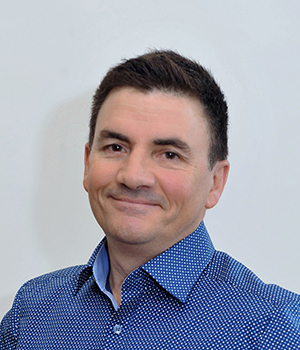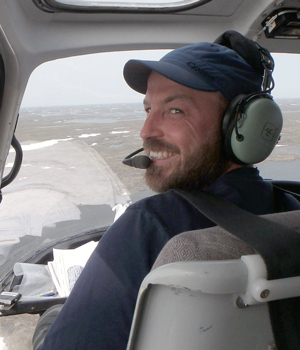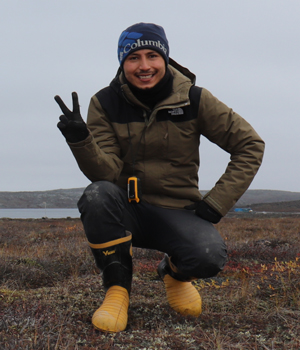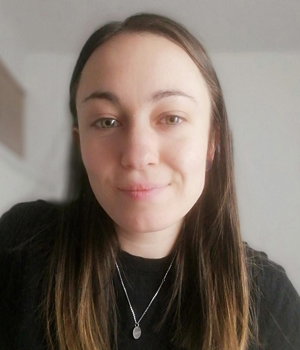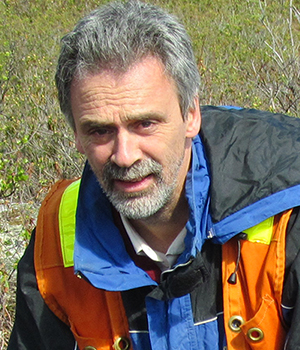Back to program
Indicator Minerals of Gold Deposits
Wednesday, November 22, 2023
Room 303AB - Société du Plan Nord
Indicator minerals are commonly used for exploration in areas covered in superficial sediments. They can provide information about the source of the eroded material and the transport distance. Within the mineralization or the host rock, indicator minerals can be used to guide exploration towards zones richer in mineralization. This session will present recent developments in the application of indicator minerals for gold deposit exploration.
This session will be offered in French and in English.
9:00 a.m.
The NSERC-Agnico Eagle Industrial Research Chair in Mineral Exploration: Reflecting on 10 Years of Work on Indicator Minerals
Conference details
The NSERC-Agnico Eagle Industrial Research Chair in Mineral Exploration is the result of a partnership between Agnico Eagle Mines Ltd., the Ministère des Ressources naturelles et de la Faune, the NSERC and Université Laval. Over the 10 years of its 2 mandates, it has built an international reputation as one of the centres of excellence in the application of indicator minerals for mineral exploration. The team has developed methods using a range of minerals (scheelite, tourmaline, rutile, gold, chalcopyrite) to identify the source of indicator minerals in surficial sediments. This presentation will provide a brief overview of the main results obtained by the Chair's team.
9:40 a.m.
Quaternary Map for the Province of Quebec: Cartographic Syntheses of Glacial Surface Deposits and Landforms
Conference details
Authors: Étienne Brouard (CGC-Ottawa), Martin Roy (UQAM) and Hugo Dubé-Loubert (MRNF)
The Quebec territory was affected by the great glaciations of the Quaternary and was host to one of the most dynamic sectors (domes) of the North American ice sheets. This is reflected in the rich and varied geomorphological and sedimentary records. In fact, the glacial deposits coverage masks the bedrock throughout the province, creating an unconventional geological environment for mineral exploration.
Despite the importance of these geological records, knowledge of the architecture of surface deposits and glacial geomorphology remains fragmentary, and the level of mapping is also highly variable across the province of Quebec.
A vast amount of data and knowledge on the Quaternary geology of Quebec has been generated over the last few decades, through numerous mapping campaigns and various scientific research projects. However, most of this data has been produced at varying scales (local, regional), which complicates the standardization and scaling of the various works, as well as limiting the creation of cartographic syntheses that would provide a global vision of the different glacial processes that have shaped Quebec. In this respect, the Geological Survey of Canada's Glacial Map of Canada is still the only reference tool, but this synthesis work dates back more than 50 years.
In this context, Quaternary geological and cartographic data were compiled with the aim of producing a glacial map of Quebec and thus updating the state of knowledge, both in terms of the major surface sedimentary packages and the various glacial landforms.
The compilation of information required to produce these maps has also enabled us to produce regional geological summaries, highlighting the main Quaternary features inherent to each of these regions, particularly in terms of the nature and spatial coverage of the various glacial deposits and flows. These syntheses and maps will help to identify areas where knowledge is lacking, and may thus assist in the development of future acquisition projects, in addition to serving as guides for mineral exploration or as academic tools.
10:00 a.m.
Assessing the effects of cryoturbation on indicator minerals from the Amaruq gold deposit (Nunavut)
Conference details
Authors: Juan Bello Rodriguez , Georges Beaudoin (Université Laval) and Isabelle McMartin (CGC-Ottawa)
In permafrost areas, mudboils (frost boils) are common features caused by cryoturbation in glacial sediments, making them significant for IM studies. Our investigation focused on understanding whether the internal motion dynamic within mudboils could lead to vertical sorting of IM in the active layer. The study took place at the Amaruq orogenic gold deposit in northern Canada (Nunavut), where we sampled till in vertical profiles down to approximately 1.3 m depth in two trenches located about 1.5 km down-ice from the deposit. These profiles included two in the central part of two well-defined mudboils, with one reaching the permafrost table (at 1.30 m depth). The heavy mineral concentrate fraction (<2mm) of all profile samples contained gold and scheelite. However, the abundance of these IM exhibited vertical variations that are not consistent across all profiles, and the size and morphology of gold grains did not show any clear trends. The highest IM abundance was found in the till within the permafrost compared to the overlying active layer. The lateral variation of IM examined in one mudboil at approximately 30 cm depth revealed the highest grain count of gold and scheelite in the central part of the mudboil. The chemical composition of gold (<400 um), scheelite and chalcopyrite (0.25-2 mm) was analyzed using EPMA and LA-ICP-MS, with most of these minerals interpreted to originate from the Amaruq gold deposit. However, none of them displayed systematic vertical trends in chemical composition. In conclusion, mudboils exhibit no systematic variations in IM properties (mineral abundance, morphology, size, and mineral chemistry) at different depths. The study suggests that cryoturbation processes do not lead to a uniform vertical fractionation of indicator minerals in mudboils due to the involvement of multiple variables in the freeze-thawing process.
10:40 a.m.
Detection and Characterization by µXRF of Indicator Minerals in Heavy Minerals Fractions
Conference details
Authors: Léa Géring, Antoine Nadeau, Georges Beaudoin and Carl Guillemette (Université Laval)
Indicator minerals are clastic grains used in exploration to trace mineralization or hydrothermal alteration within the bedrock. (1) Their number, (2) composition, (3) shape and (4) (relative) proportions, within the heavy mineral fractions, need to be studied in order to assess the nature and distance of the mineralized source. The aim of this project is to automate the collection of these 4 types of information, to improve the reliability of the method and reduce the time consumption involved. Our automated approach is based on x-fluorescence elemental intensity mapping and sample photography. Fluorescence data are acquired using the Tornado M4 (BRUKER), with a time of 3 milliseconds per pixel to optimize measurement time. Data processing begins with the creation of a grain map using thresholding methods on the fluorescence data, then a median filter is applied to smooth grain edges, before applying watershed segmentation (PyImageJ). An intermediate step aims to detect polymineral grains and define the edges of the various minerals making up the grain. This is followed by the collection of fluorescence data. This consists of adding up the counts recorded by the 9 central pixels of each grain. The data thus collected is input into a decision-tree type algorithm, which is used to identify the nature of the mineral making up the grain. Shape parameters are calculated from an optical image, as µXRF mappings include distortion due to the angle of the primary beam. The optical image must be co-recorded with the µXRF data, in order to use the centroids of the grain map as input data to guide an artificial intelligence model (Segment Anything, Meta). This enables each grain contour to be precisely detected and associated with a binary mask, from which circularity, roundness and elongation are calculated.
11:00 a.m.
Recycling Gold Grains in Glacial Sediments: A Fresh Look at Northern Abitibi
Conference details
Tracking the dispersal of gold grains in the secondary environment with the aim of finding their source is a method that has proved its worth in the industry... but not everywhere! Some regions, such as the northern Abitibi region, resist giving up their secrets, being dotted with anomalous grain counts whose sources are elusive. New grain characterization technologies have documented changes in grain signatures in the secondary environment, leading to the development of a dispersion model that takes into account glacial sediment recycling. In particular, this approach enables the discrimination of significant anomalies from those generated by the stochastic nature of the background noise. Various examples from Quebec and elsewhere will be presented.
11:20 a.m.
Trace Element Composition of Chalcopyrite: Its Potential as an Indicator Mineral and Implications for Mineral Exploration
Conference details
Authors: Enzo Caraballo, Georges Beaudoin (Université Laval) and Sarah Dare (UQAC)
Chalcopyrite is a copper-iron sulphide found in a wide variety of mineral deposits. Its trace element composition is highly variable. Several studies have identified chalcopyrite as a potential indicator mineral for exploration. To determine the geochemical criteria for its use as an indicator mineral, chalcopyrite from 8 deposit types worldwide, including 2 magmatic and 6 hydrothermal, were analyzed by electron microprobe (EPMA) and by laser ablation and inductively coupled plasma mass spectrometry (LA-ICP-MS). The trace element composition of chalcopyrite was examined using statistical methods to characterize its variation in the different deposit types which, combined with machine learning, enabled the development of discrimination models.
The most important difference is between magmatic and hydrothermal systems. This difference is determined by Ni, which is enriched in magmatic chalcopyrite compared with hydrothermal chalcopyrite. In magmatic systems, trace element composition in chalcopyrite reflects two main processes: 1) magma/sulphide liquid interaction (R-factor) during crystallization, and 2) fractional crystallization of sulphide liquid in Ni-Cu sulphide deposits. This forms the basis of the partial least squares-discriminant analysis (PLS-DA) supervised classification models developed in this study, which discriminate between two types of magmatic deposits studied (PGE-lites vs. Ni-Cu sulphides) and ore type (Cu-rich and Fe-rich). In VMS deposits, the concentration of trace elements in chalcopyrite is a function of the composition of the surrounding rock, the temperature and the nature of the hydrothermal fluid. PLS-DA indicates that the trace element composition of chalcopyrite varies according to lithostratigraphic subtype. Thus, three Random Forest (RF) prediction models allow the discrimination of chalcopyrite among the 6 lithostratigraphic contexts of VMS. Finally, three RF models were developed to classify chalcopyrite among the 8 deposit types. These models were tested on data compiled from the literature and on analyzed chalcopyrite grains recovered from till and esker sediments in the Churchill Province (Quebec, Canada), and demonstrate the use of chalcopyrite chemistry to determine its provenance for mineral exploration purposes.
A strong variation of trace elements in chalcopyrite is present in each type of deposit; nevertheless, its composition has a particular signature depending on the formation context. This highlights the high potential for mineralization source discrimination, as demonstrated by discrimination models. This study demonstrates that chalcopyrite can be used as an indicator mineral, and offers the opportunity to apply these methods to sediments in mineral exploration.
11:40 a.m.
Photomicrography of Minerals and Methods of Mathematical Description
Conference details
Authors: Arnaud Back, L. Paul Bédard, Cyril Kana Tepakbong, Julien Maitre (UQAC), Kévin Bouchard, Amadou Barry (UMR INRS-UQAC) and Réjean Girard (IOS Services géoscientifique)
In mineral exploration, mineral identification and counting are essential in the study of glacial sediments. Automated learning based on photographs or photomicrographs could be a fast and efficient means of mineral identification and quantification. Although there has been a rapid increase in the number of articles detailing mineral recognition using automated learning algorithms, little research has focused on the effect of the image acquisition process. The identification of minerals from images, or the mathematical description of grains, are complex tasks, requiring a reduction in variability at source, i.e. during image acquisition. To meet this requirement, we have developed an image acquisition protocol for optical microscopes. Our protocol focuses on two main objectives: (1) ensuring reproducibility and (2) reducing the parasitic effects of mineral images. With regard to reproducibility, we detail: the management of camera and optical system uncertainties, the use of a color gauge as a reference and the parameterization of acquisition conditions, such as external light. For image enhancement, we detail the choice of lighting and its impact on algorithm accuracy, lens selection and white balance calibration. We then test our protocol in a case study of automated mineral recognition in till using photomicrographs and an automated learning algorithm. The sample studied is a heavy mineral concentrate from till, comprising 20 mineral species duly characterized by a mineralogist. Using these images, it is then possible to extract numerous grain characteristics, which can be grouped into four main categories: size, shape, angularity and surface texture. The multitude of tools available in the extensive literature (>274 articles) has made it necessary to understand and sort these tools in order to provide a consistent and standardized description of the characteristics of each grain. The joint development of automated mineral recognition and grain description using optical microscope image analysis will provide a cost-effective alternative to conventional quantitative mineralogical analysis techniques.

